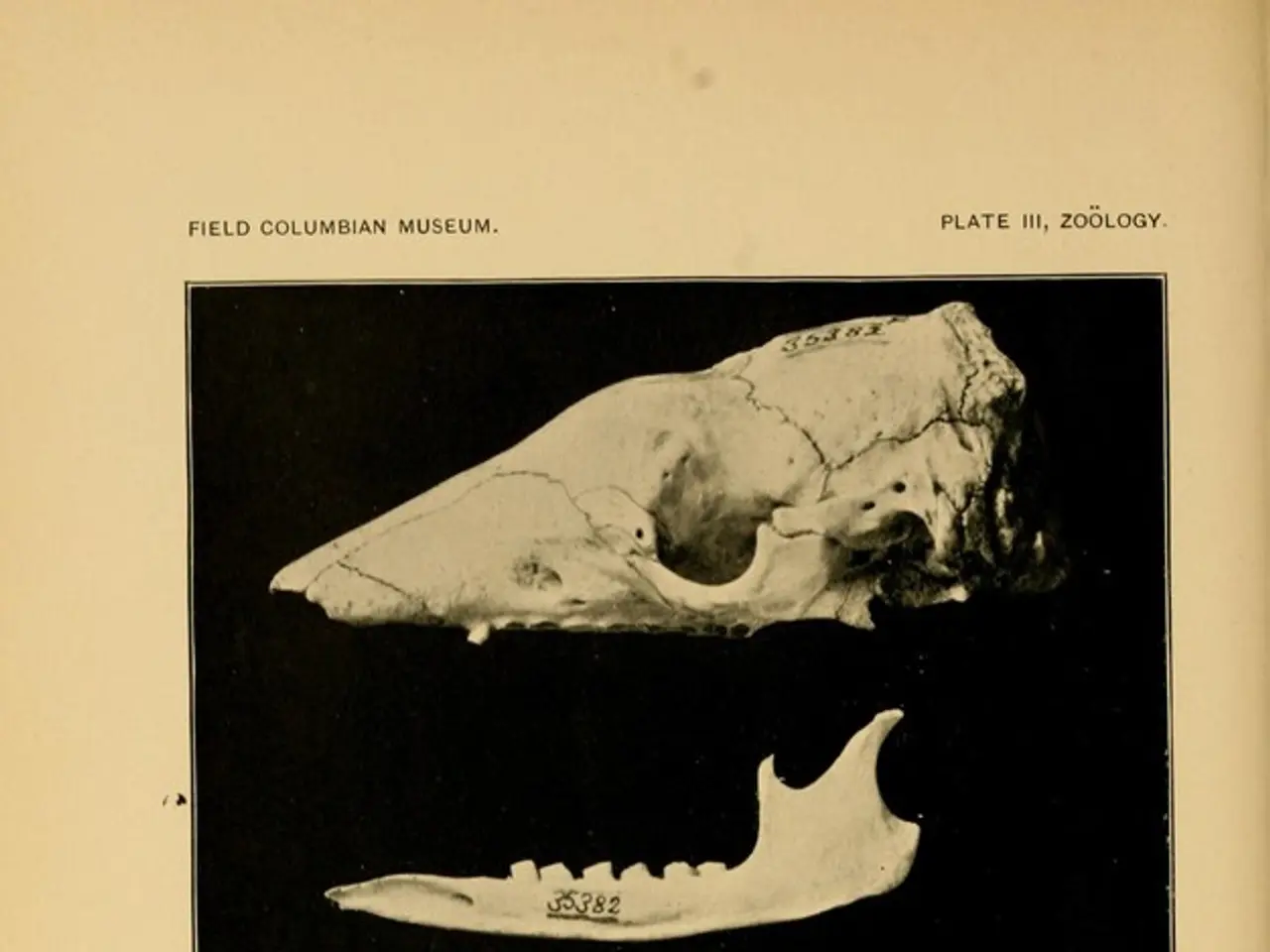Brain's Structural Component: Basal Ganglia
The basal ganglia, a cluster of neurons deep within the brain, are central to understanding how brain biology shapes behaviour. Located at the base of the forebrain, these structures are symmetrical and surround a critical structure called the thalamus [1].
These fascinating brain regions serve as a filtering and fine-tuning system, processing cortical commands to select appropriate actions, suppress inappropriate ones, and link motor functions with habits, emotions, and motivation [1][3].
The basal ganglia are key to regulating and coordinating voluntary movements, habit formation, emotions, and motivation. They help initiate desired movements and inhibit unwanted ones by balancing “Go” and “Stop” signals through two main pathways [1][3].
In addition to motor control, the basal ganglia are crucial for learning habits and routines through procedural learning. Repeated actions become automatic over time, forming habits and routines [1][3]. Dopamine release within the basal ganglia (notably from the substantia nigra) reinforces behaviour related to rewards, thus playing a key role in motivation and reward processing [1][3].
Moreover, the basal ganglia interact with the brain’s limbic system, contributing to emotional regulation and influencing mood, impulse control, and drive-related behaviours [1][2]. This involvement helps integrate emotional states with motor and motivational processes.
The main components of the basal ganglia include the caudate nucleus, putamen, globus pallidus, subthalamic nucleus, and substantia nigra. Damage to these areas can lead to movement disorders, disruptions in habitual behaviours, and altered emotional regulation [2][5].
Roles of the Basal Ganglia:
| Function | Role of Basal Ganglia | Impact | |----------------------|-------------------------------------------------------------|------------------------------------------------------------------------------------------------| | Movement | Initiate and stop movements, smooth and purposeful actions | Controls voluntary motor control; damage causes tremors, rigidity, abnormal posture | | Habit and Procedural Learning | Automates repeated actions through procedural learning | Forms habits and routines, making behaviours efficient and automatic | | Motivation & Reward | Dopamine-mediated reinforcement of rewarded behaviours | Motivates repetition of pleasurable or goal-achieving actions | | Emotion Regulation | Connects with limbic system to regulate emotions and impulses | Influences mood, impulse control, and emotional responses related to behaviour |
The basal ganglia function like a traffic controller for movement signals, ensuring smooth, purposeful motor control [1][3]. Disorders such as Parkinson's disease, Huntington's disease, Tourette's syndrome, and Attention-Deficit Hyperactivity Disorder (ADHD) can be linked to dysfunction in basal ganglia circuits [2][5].
Thus, the basal ganglia offer insight into various conditions, illustrating how brain circuits shape everyday habits and choices. They show that behaviour has biological roots, bridging psychology and neuroscience.
- The basal ganglia, a crucial part of understanding behavior, are located at the base of the forebrain and serve as a filtering and fine-tuning system.
- Key roles of the basal ganglia include the regulation and coordination of voluntary movements, habit formation, emotions, and motivation.
- The basal ganglia help initiate desired movements and inhibit unwanted ones by balancing "Go" and "Stop" signals through two main pathways.
- Repeated actions become automatic over time due to the basal ganglia's role in learning habits and routines through procedural learning.
- Dopamine release within the basal ganglia reinforces behavior related to rewards, playing a key role in motivation and reward processing.
- The basal ganglia interact with the brain's limbic system, contributing to emotional regulation and influencing mood, impulse control, and drive-related behaviors.
- Damage to the basal ganglia's main components can lead to movement disorders, disruptions in habitual behaviors, and altered emotional regulation.
- The basal ganglia function like a traffic controller for movement signals, ensuring smooth, purposeful motor control and bridging the gap between psychology and neuroscience.
- Various neurological disorders such as Parkinson's disease, Huntington's disease, Tourette's syndrome, and Attention-Deficit Hyperactivity Disorder (ADHD) can be linked to dysfunction in basal ganglia circuits, offering insight into these conditions and their impact on health and wellness.




